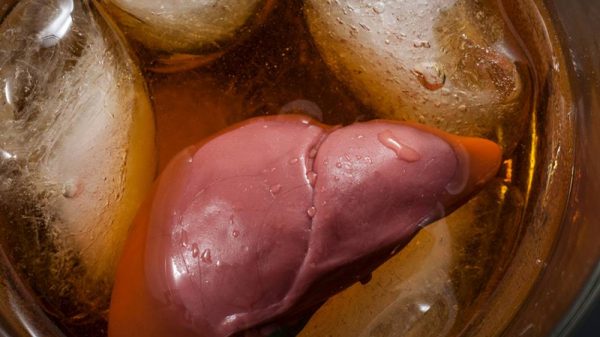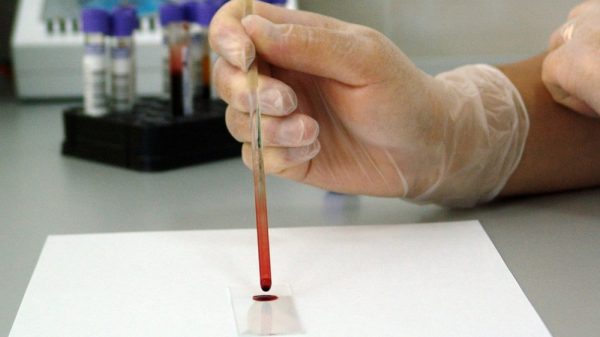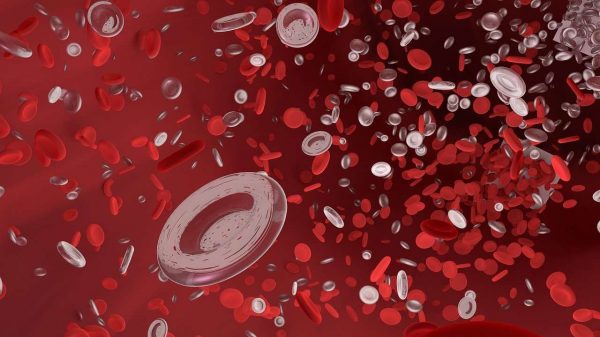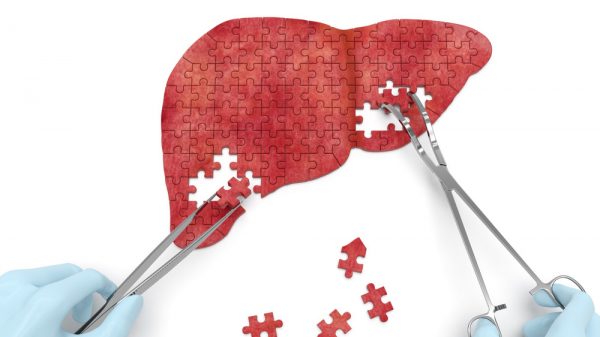Though fatty liver disease is generally regarded as a condition that affects adults, it is becoming increasingly common in children. Luckily, there are things you can do at home to help reverse childhood fatty liver disease. Keep reading to find out tips for making diet and lifestyle changes that support liver health, including healthy meals for kids, exercise tips, and more.
What Is Fatty Liver Disease?
Fatty liver disease, also known as hepatic steatosis, is a condition that describes the accumulation of fat in the liver. To meet the criteria for fatty liver disease, 5% of liver cells – or hepatocytes – must contain triglycerides. Triglycerides are fats that are stored within the liver. (1) Hepatic steatosis is categorized as either alcoholic fatty liver disease, or nonalcoholic fatty liver disease (NAFLD). Children with fat accumulation in the liver are affected by NAFLD.
If your child has just been diagnosed with fatty liver disease, you may feel shocked and overwhelmed. Make sure you talk to your child’s doctor to identify the cause of the fatty liver disease and receive any medications necessary to treat the causal condition. In some cases, fatty liver disease develops as a result of another underlying condition. In other cases, fatty liver disease is the primary condition.
In conjunction with any necessary medical treatments, nutrition, and lifestyle changes can help reverse fatty liver disease. Regardless of the cause of fatty liver, you can take steps at home to support your child’s liver.
So, if your child has received a fatty liver disease diagnosis, don’t despair! The liver is an extremely resilient organ that can regenerate and readily respond to treatments and environmental changes. Childhood fatty liver disease seldom progresses to more serious conditions like NASH or liver cirrhosis. In so many cases, prompt intervention with a liver-friendly diet and lifestyle can successfully reverse childhood fatty liver disease.
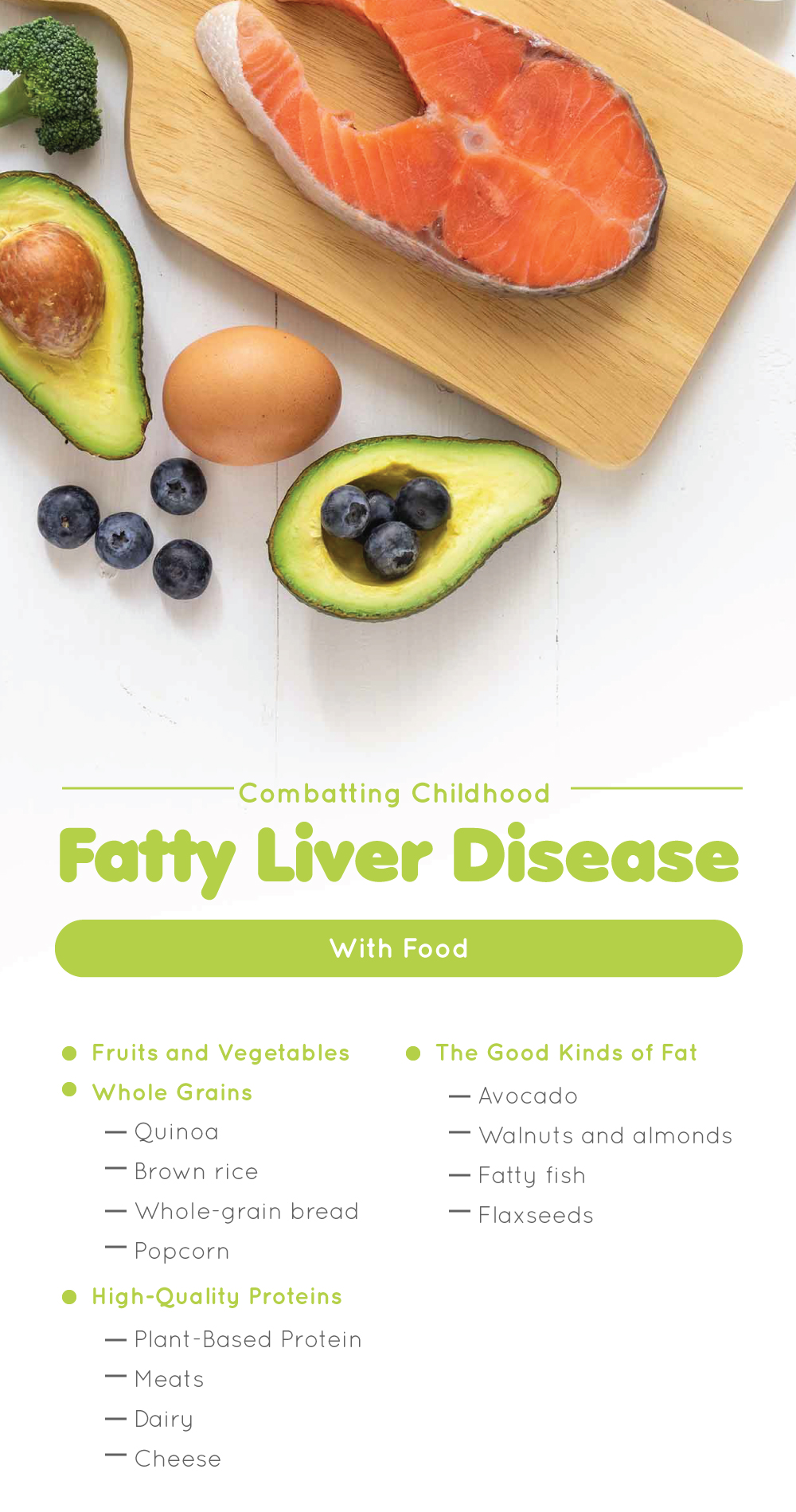
Combatting Childhood Fatty Liver Disease
Getting kids to eat certain things can feel like a losing battle, just as trying to get them to play outside instead of watching TV is a challenge. Here we go through foods and lifestyle tips that specifically support liver health, as well as tips for encouraging your child to make these changes that can help reverse fatty liver disease.
Fruits and Vegetables
Fruits and veggies are notoriously the most difficult food group for children to eat in abundance, but they are crucial for supporting liver health. Fruits and vegetables contain a variety of vitamins, minerals, and fiber that support liver health. Nutrients like vitamin C and zinc encourage healthy immune response and tissue repair. Antioxidants like polyphenols are also plentiful in fruits and vegetables and help protect liver cells from inflammation and damage.
1. Take Advantage of Natural Sugar in Whole Fruit
Whole fruits are naturally very sweet, and kids are more likely to gravitate towards fruits, as opposed to vegetables. To make whole fruits even more appealing, cut them into manageable, bite-size pieces that kids can easily grab. You could even try using cookie cutters to mold certain fruits into shapes like animals, hearts, or stars.
Though the full benefit of fruit comes from consuming it in its whole form, fruit smoothies can also be an effective method to encourage kids to eat more fruit. Using frozen fruit is a great way to store fruit in bulk without going bad. You can try all different combinations of fruits to create a variety of smoothie flavors. As an example, try blending frozen blueberries, frozen bananas, peanut butter, and almond milk. Frozen bananas make the texture of a smoothie similar to a milkshake.
2. Capitalize on Color
Colorful foods can often be visually appealing and exciting for kids. Try preparing a fruit and vegetable platter with dipping sauces; hummus for the vegetables and a low-fat, dark chocolate sauce for the fruits. On a large plate, organize sliced fruits and vegetables to look like a face. You can even get the kids to join in – get creative and have fun! For example, try using cherry tomatoes for the eyes, carrot and pineapple strips for the hair, beets for the mouth, blackberries for the nose – the possibilities are endless. Another idea is adding a beet to a fruit smoothie and watching the shake turn from a normal color into a vibrant pink shake.
3. Hide Vegetables
Hiding vegetables in kids’ favorite foods is an effective tactic for encouraging higher vegetable consumption. For example, cauliflower can be ground in a food processor and mixed into rice. In this way, it will be nearly impossible to notice, since cauliflower rice is nearly indistinguishable from normal rice. Kale and spinach can also be chopped into small pieces and added to lean ground beef for taco filling, burrito filling, or meat sauce.
Whole Grains
Whole grains are filled with vitamins and minerals to support a healthy liver. Moreover, whole grains are rich in fiber that supports gut health and lowers liver inflammation.
- Quinoa: This ancient grain is packed with protein, fiber, and vitamins. It cooks quickly and works great as a rice substitute or thickener for soups and stews.
- Brown rice: White rice – the most popular kind of rice we get at the grocery store or that’s served at restaurants – starts as brown rice. The industrial process removes the outer husk of the brown rice, leaving just the starchy interior that we know as white rice. However, the outer husk of rice contains lots of protein, fiber, minerals, and vitamins, while the starch only contains carbohydrates. Always reach for whole grain rice.
- Whole-grain bread: Steer clear of white bread in favor of whole-grain bread that contains nuts, seeds, and no added sugar. Whole-grain bread will always be darker in color and higher in nutrients.
- Popcorn: Interestingly, popcorn is a whole grain! For the healthiest version of popcorn, purchase a container of kernels and pop them at home using a little bit of oil on the stovetop. Individually-packaged, microwaveable bags tend to be high in salt and contain lots of butter. In a large pot, you can make a large batch of popcorn that can serve as snacks for several days.
High-Quality Proteins
High-quality protein is crucial for supporting liver health, as well as overall health. Protein contains amino acids, which are critical for carrying out all biological processes such as producing enzymes, making neurotransmitters, and supporting muscle synthesis and tissue growth. The human body is able to synthesize some amino acids on its own, while others it must obtain from the foods we eat. The essential amino acids are histidine, threonine, methionine, lysine, leucine, isoleucine, valine, phenylalanine, and tryptophan. Children especially need ideal ratios of essential amino acids – sometimes more than adults need – to support rapid rates of growth.
Emphasize plant-based proteins as the main protein source, and supplement with high-quality animal products.
1. Plant-Based Protein
Soy protein found in tofu and tempeh is an excellent protein source for getting all essential amino acids. Most other plant-based whole foods contain an assortment of essential amino acids. Beans, nuts, and seeds also contain protein and essential amino acids. Examples include lentils, black beans, kidney beans, walnuts, almonds, flaxseeds, and chia seeds. Just make sure your child consumes a wide variety of whole grains, fruits, vegetables, nuts, and beans to get the ideal ratio of essential amino acids that supports optimal health.
2. Meats
When choosing meats, stick to the leanest cuts of meat that you can find. Incorporating fish like salmon into your diet is another great way to get essential amino acids as well as healthy omega-3 fatty acids that have liver-protective properties. Steer clear of processed meats that are high in sodium and preservatives.
3. Dairy
Yogurt contains optimal ratios of essential amino acids and probiotics that aid digestive function and promote liver health. However, some yogurts contain lots of added sugars and artificial flavors. Make sure to stock the fridge with yogurts that are nonfat, low in sugar, and high in protein.
4. Cheese
Cheese is a great source of essential amino acids, but many cheeses are high in saturated fat and sodium, both of which are bad for liver health. When choosing cheeses, look for those that are low in salt, low in fat, but high in protein. Low-fat mozzarella is a great option for cheese that provides protein without undesirable salt and fat content.
The Good Kinds of Fat
Dietary “fat” unfortunately carries a negative connotation, even though fat is indispensable to our health. Not all fats are the same. Saturated fats and trans fats are harmful fats that should be avoided, while polyunsaturated and monounsaturated fats should be consumed in abundance. Avoid saturated fats that contribute to inflammation, which can be found in fatty cuts of steak, processed meats, milk, yogurt, and cheese. In contrast, polyunsaturated and monounsaturated fats fight inflammation. Here are excellent sources of healthy fat that you can incorporate into meals:
- Avocado: Avocado is a fruit that is rich in monounsaturated fat, as well as fiber and vitamins. Avocado is great on sandwiches or in dips like guacamole.
- Walnuts and almonds: These nuts are rich in monounsaturated fat and work well in trail mix or as a topping for oatmeal and salads.
- Fatty fish: Fish like salmon and mackerel contain omega-3 fatty acids, which is a type of polyunsaturated fat with potent anti-inflammatory activity.
- Flaxseeds: Flaxseeds are an excellent plant-based source of omega-3 fatty acids. Go for ground flaxseeds, which can be easily added to any dish and are more bioavailable than whole flaxseeds.

Healthy Meals for Kids
Kids are usually fans of popular staple meals, like pancakes, pasta, pizza, and burgers. The key to encouraging kids to eat healthy is creating nutritious versions of their favorite meals. Having healthy food and dinner recipe ideas on hand helps make the weeknight meals easier. Here are a few ideas for breakfasts, lunches, dinners, and snacks that incorporate ingredients that fight fatty liver disease:
Breakfast
Breakfast can be tricky. For many families, the morning routine is a mad rush to get out the door so everyone is on time for work and school. So, breakfasts that are both nutritious and quick are the way to go. Prepping breakfast the night before is also especially helpful. Here are a few ideas:
1. Overnight Oats
Oatmeal is rich in fiber and antioxidants. Try soaking oatmeal, flaxseeds, cinnamon, and raisins in almond milk overnight. Ripe bananas or applesauce without added sugar can serve as natural sweeteners. Top with desired fruit, like blueberries or blackberries. Pre-portioning the oatmeal in individual mason jars makes overnight oats an easy grab-and-go breakfast for kids in the morning.
2. Chia Seed Pudding
Chia seed pudding is kind of a mix between tapioca and regular pudding, except it’s way healthier! Simply add whole chia seeds to coconut milk or almond milk, and sprinkle with a little cinnamon. Like overnight oats, allow the chia seeds to soak overnight in individual containers. In the morning, drizzle with a low-glycemic sweetener like agave nectar and top with fresh fruit like raspberries or blueberries. The result is a protein-packed, fiber-filled, and antioxidant-rich breakfast that’s ready in a second.
3. Pancakes
Pancakes, though normally made with refined flour and lots of sugar, can be transformed into a healthy breakfast. Instead of refined flour and sugar, try using bananas, ground flaxseeds, and almond meal to create a filling and nutritious breakfast. Using extremely ripe bananas is a healthy and tasty way to sweeten pancakes, so you don’t need to use added sugars.
Lunch
Lunch requires portable, tasty, and healthy foods that kids can eat at the lunch table.
1. Sandwiches
Sandwiches have seemingly been around forever and may seem boring, but they offer versatility and flexibility. To put a healthy spin on traditional meat and cheese sandwiches, try topping whole-grain bread with slices of marinated tofu, lettuce, and dairy-free cheese. The classic peanut butter sandwich is always a healthy option too. Just make sure to use whole-grain bread and peanut butter that doesn’t contain hydrogenated oils and added sugar.
2. Sliced Vegetables with Dip
Carrots, celery, and sliced bell pepper is a colorful and healthy mix of vegetables. Include a small container of hummus for a tasty and protein-packed dip.
3. A Piece of Fresh Fruit
Including a piece of fruit in your kid’s lunchbox is an easy and delicious way to add fiber, antioxidants, and vitamins to his or her meal. Apples, bananas, and tangerines are nutritious options that are also easy to eat without getting too messy.
4. Trail Mix
Combine nuts, seeds, and dried fruits to create trail mix. For an extra hint of sweetness, try adding low-sugar dark chocolate chips.
Dinner
Planning healthy, kid-friendly dinners is perhaps the most difficult. However, there are great options for putting a healthy spin on dinnertime favorites. Try these healthy dinner ideas for kids using ingredients that help reverse fatty liver disease.
1. Fajitas, Tacos, or Burritos
To make a nutrient-packed version of these classic Mexican dishes, try using the leanest version of ground beef available as a base. Then, load up on vegetables of your choice. For example, try sautéing bell peppers, onions, squash, kale, and zucchini and season with your favorite fajita or taco seasoning. Instead of using tortillas made of white flour, try a whole-grain or grain-less tortilla made of cassava root. Top your fajitas, tacos, or burritos with avocado or fresh guacamole for a load of healthy fats, as well as salsa and hot sauce to add low-calorie but delicious flavor.
2. Mashed Potatoes
A popular side dish, mashed potatoes can be transformed into a nutrient-dense pairing for any meal. Instead of using regular white potatoes, try using sweet potatoes, which are packed with fiber, antioxidants, and vitamins like beta carotene that lower inflammation. Instead of using butter or cream in the mashed sweet potatoes, substitute coconut cream or low-fat sour cream to create a similarly smooth texture.
3. BBQ
Everyone loves BBQ, especially in the summer. Try using a low-fat, low-sodium BBQ sauce. Swap out fatty cuts of pork for lean chicken, to avoid saturated fat and to keep protein content high. Another great alternative is using jackfruit, which is a versatile fruit that can take on a savory flavor with a meaty texture. It’s hard to tell the difference between pulled pork and pulled jackfruit! If using jackfruit, add a protein-rich side like beans, since jackfruit doesn’t contain a lot of protein when compared to meat. Jackfruit can also be used in sloppy joe recipes. Helpful tip: the slow cooker or crockpot is a perfect tool for cooking a large amount of food for meal prep.
4. Spaghetti with Meat Sauce
As a base, use whole-grain pasta instead of white pasta to make sure you’re getting protein, fiber, and other nutrients, instead of just refined carbs. An even healthier version of pasta is chickpea or lentil pasta. Instead of ground beef, use ground turkey, which naturally has a lower fat content. As an alternative to meat sauce, pasta can also be served with marinara and meatballs made with ground turkey.
5. Veggie Burgers
In a pinch, having premade foods on hand is a huge time saver. Frozen vegetable burgers made with beans, soy protein, sweet potato, and other vegetables can substitute for normal high-fat, high-calorie beef burgers. Try eating veggie burgers on whole-wheat buns with toppings and condiments. Keep in mind that sauces and condiments like ketchup and cream-based dressings can contain a shocking amount of sugar, fat, and calories. Before buying, check the nutrition label to make sure the dressing is low in sugar, saturated fat, and calories.
6. Baked Vegetables
French fries are a staple food at every restaurant and a favorite snack food for most children. Though they taste good, French fries are filled with trans and saturated fats that contribute to fatty liver disease. You can easily make a substitute for fries using the oven, as an alternative to frying potatoes in oil. Instead, try cutting sweet potatoes and white potatoes into strips, lightly coating them in olive oil, and seasoning with salt, pepper, and garlic powder. Then, bake in the oven until lightly browned and crispy. You can even make fries out of other starchy root vegetables like cassava, parsnips, rutabaga, and turnips. Mix the potato fries with the root vegetable fries, season, and serve with ketchup. Your kids may not even notice they’re eating a wide variety of health-promoting vegetables.
Calories and Portion Size
Being at a healthy weight is crucial for reversing fatty liver disease. At the same time, children need adequate calories to support optimal growth. Kids are always rapidly growing and needs lots of nutrients and calories to support healthy development.
The trick is that processed, refined foods high in sugar, fat, and salt are calorie-dense and devoid of nutrients. The high sugar, fat, and salt content makes these foods particularly tasty – they are designed to get us hooked so that we always want more. Plus, the calorie density is very high without taking up much volume in the stomach. Consequently, biological signaling between the digestive system and the brain doesn’t fire correctly, and we may think we’re still hungry when we aren’t. This, in turn, leads to weight gain.
As the food focus shifts towards whole grains, fruits, vegetables, beans, and nuts, we can naturally eat a larger quantity of food without overdoing the calories. Fiber-rich foods take up much more space in the stomach and help us feel full.
To help your child reach a healthy weight, one tactic you could try instead of limiting portion size is simply changing the emphasis on the dinner plate. For calorie-dense foods – especially toppings like parmesan cheese and cheddar cheese – prepare only enough for about one serving per person. When kids are hungry, let them go back for seconds and thirds for whole foods like fruits, veggies, beans, and whole grains.
Making Exercise Fun
Exercise is crucial for maintaining a healthy body weight, lowering inflammation, and promoting cardiovascular health. As a result, exercise is greatly beneficial for reversing fatty liver disease.
Exercising simply for the sake of exercising is unappealing to pretty much all of us, including kids. Instead, try making fun plans that involve physical activity, without the direct focus being exercise. This could be as simple as taking your dog for a walk in the local park or putting on your kid’s favorite music and having a dance party. Or, maybe your child wants to try an organized sport like soccer, basketball, or baseball. Other ideas include:
- Planning a family outing to check out a new hiking trail
- Organizing a neighborhood game of capture the flag
- Encouraging kids to create an obstacle course
- If it’s summer, field day games like potato sack races and the water balloon toss are great ways to get kids outside and staying active
Other Things to Think About
When combatting fatty liver disease with diet and lifestyle, make sure that you have all the support you need.
Support Groups
As parents, we can often feel alone when it comes to what’s best to feed our kids. It can feel like many institutions aren’t on our side such as schools, fast food restaurants, and marketing – i.e., the eye-level candy that lines the checkout aisle at the grocery store. Joining groups connecting parents facing the same challenges can be a helpful way to find support and share ideas.
Food Aversions
It’s normal for children to be picky eaters. However, if it is impossible to feed your child any variety of food, it may be a good idea to evaluate him or her for extreme sensitivities to food texture, color, smell, and taste. Though the average child is not excited about broccoli, children with food aversion are even more prone to finding broccoli revolting to the point of tears. If a child has food aversions, he or she is hypersensitive to certain foods. This reaction is often tied to an emotional response as well and can result in anxiety and fear of trying new foods. A food aversion specialist can help your child overcome difficulties with trying new foods.
Establishing Routines
Kids’ lives pretty much revolve around routine; they go to school at the same time each day, rotate through the same classes, come home at the same time each day, and go to bed around the same time each night. Maybe your household also has other routines, like completing chores at certain times.
Life is so busy that folding exercise or active games into the family routine is an effective way to make sure kids get enough physical activity consistently. Similarly, having a set time for dinner each night allows kids to know what to expect. Plus, having planned, sit-down dinners regularly allows everyone to be thoughtful about what they’re eating without feeling rushed. Sometimes, eating on-the-go can result in quickly gobbling down something quick and easy like fast food or takeout.
Planning Meals and Activities as a Family
Participating in activities and meals as a family creates an atmosphere of support. If only one kid has to eat vegetables, he or she could be resentful that the others don’t have to also eat vegetables. If the whole family is eating healthy meals and partaking in physical activity, your child will feel more included and more likely to stay consistent.
Involve the Kids in Meal-Prepping and Planning
Kids love to feel like they are responsible for making decisions and helping the process. Allow your kid to use his or her creativity to contribute to meal planning and cooking!
For example, maybe give your child a role in picking what vegetables should be spiralized. Or, maybe as part of a routine, give your child the job of preparing a homemade trail mix. Have an assortment of nuts, seeds, and dried fruit available. For example, cashews, almonds, and walnuts in the nut category; pumpkin seeds and sunflower seeds in the seed category; and raisins, dried cherries, and dried apricots in the dried fruit category. Have your child create the trail mix by choosing one ingredient from each group and combining them in a bag.
Involving kids in meal-prepping and planning also helps them understand why they’re eating these foods while learning how to prepare them. This helps instill healthy eating patterns that they can take with them as adults.
As you’re cooking, you can also help your kids learn about the foods they’re eating by communicating the health benefits of different fruits and vegetables. For younger children, fun facts – that may be a little oversimplified – help communicate the importance of fruits and veggies. For example, did you know that beets help Olympic athletes run faster and win gold medals?
Substitution Instead of Elimination
When it comes to diet changes for any of us, eliminating certain foods can feel restrictive and difficult to stick to. Though well-intended, the restrictive approach tends to backfire by leading to cravings for foods we know we shouldn’t have. Replacing unhealthy foods with similar alternatives helps train taste buds to accept the new foods without feeling deprived of the food we love. This leads to more sustainable diet changes.
Take One Step at a Time
Food choices and exercise habits don’t have to change overnight. Making too many changes in a short time can lead to resistance. Rapid and drastic changes also make new patterns less sustainable, making it easier to revert to old patterns. Instead, make small changes that stick.
A good rate of change to aim for is one nutritious substitution per week. Here are a few examples:
1. Replacing Sugary Beverages
Replacing sugary drinks with water will drastically cut down calories and sugar intake. In the first week, try substituting soda with a blend of juice and carbonated water. Apple juice and grape juice work great with carbonated water and create the illusion of soda. During the second week, try increasing the proportion of water until juice is eliminated. Flavored fizzy water is also a healthy alternative for soda.
2. Replacing White Pasta
Immediately swapping out white pasta for a whole grain or bean-based pasta can be an obvious switch for some kids. One change for the week might entail preparing a blend of white pasta and whole-grain pasta. This should ease the transition to switching over to only whole-grain pasta.
3. Replacing Fried Foods
This is an excellent option for a weekly change. If crispy chicken nuggets or chicken tenders are a family favorite, try using almond flour and air fryer to bread and “fry” chicken, to replace real fried chicken that is deep-fried in oil.
Conclusion
If your child has been diagnosed with fatty liver disease, dietary changes and exercise will help reverse fatty liver disease and prevent progression. The challenge is making healthy foods and exercise a habit in your child’s life. By making gradual changes, shifting towards whole foods, and making exercise a fun part of the family routine, you can help your child reverse fatty liver disease and equip them with healthy habits for the future.
References:
